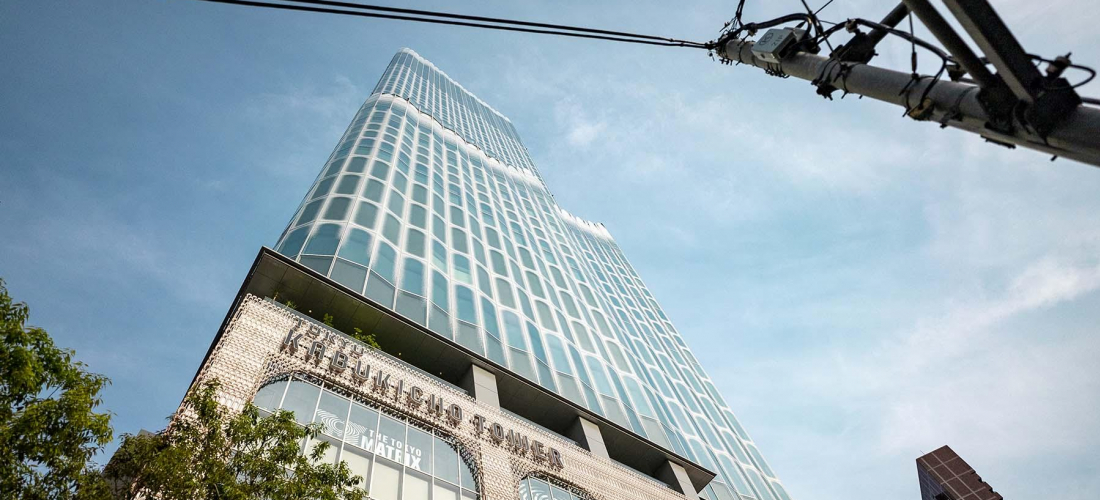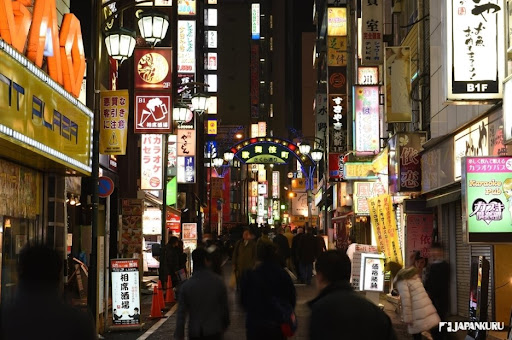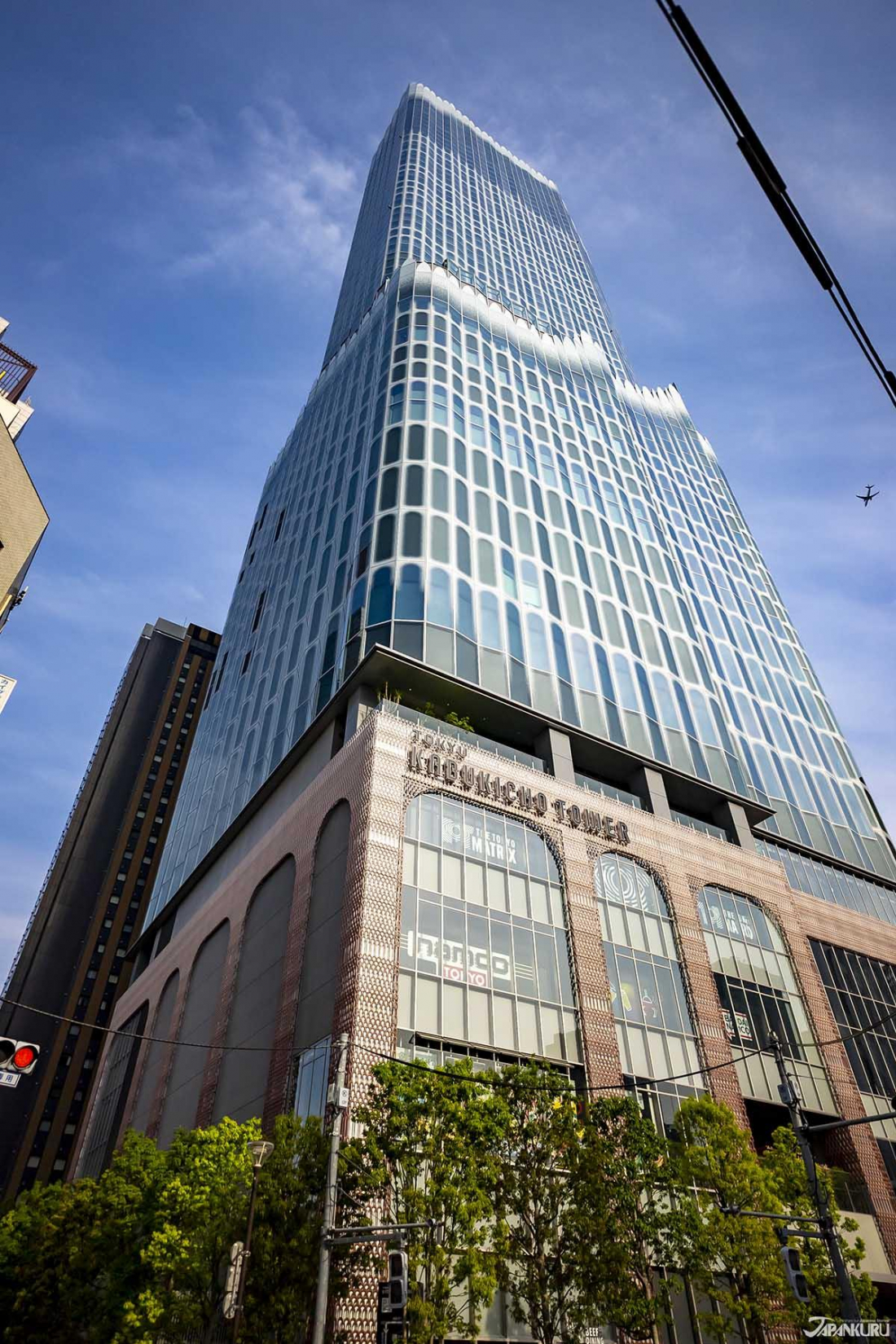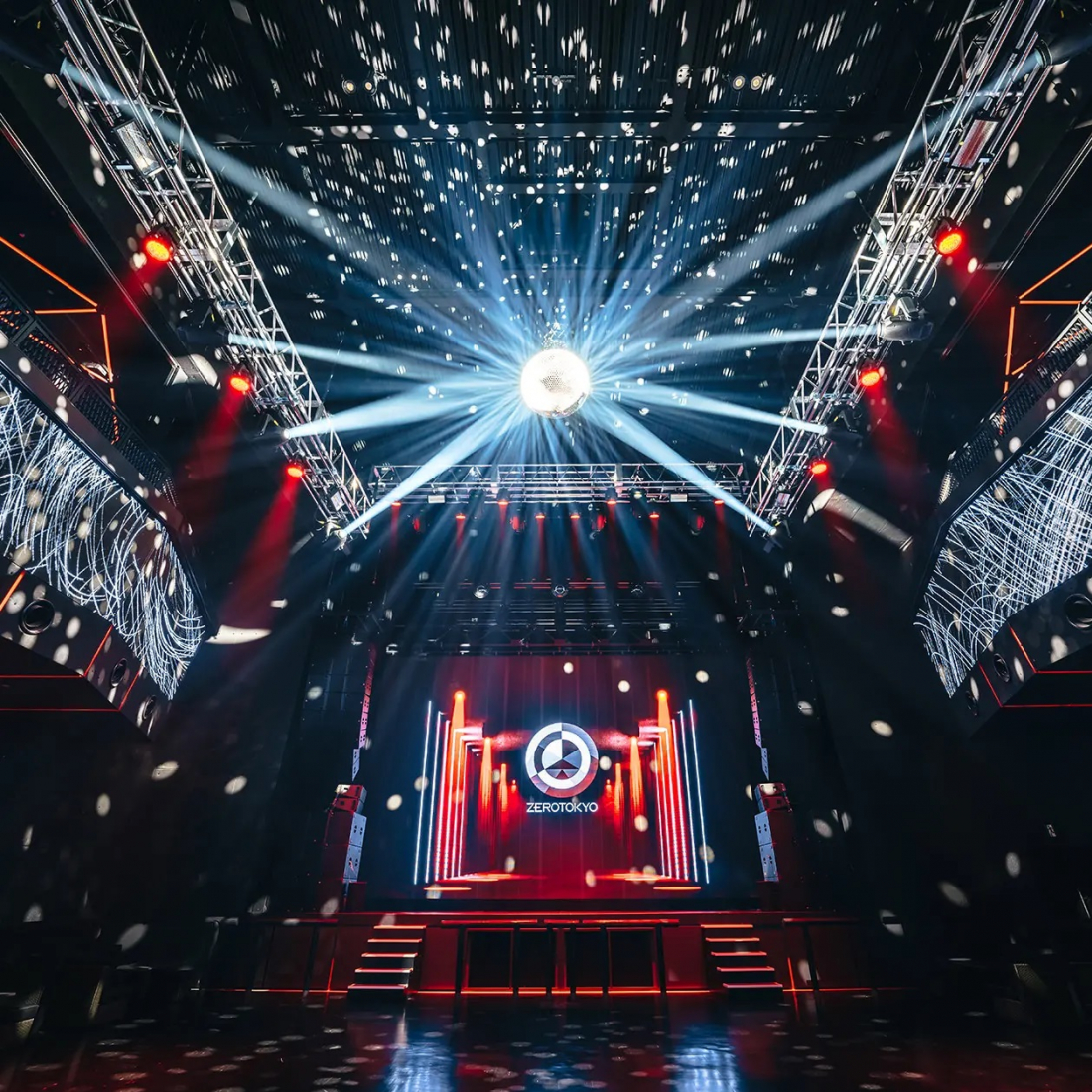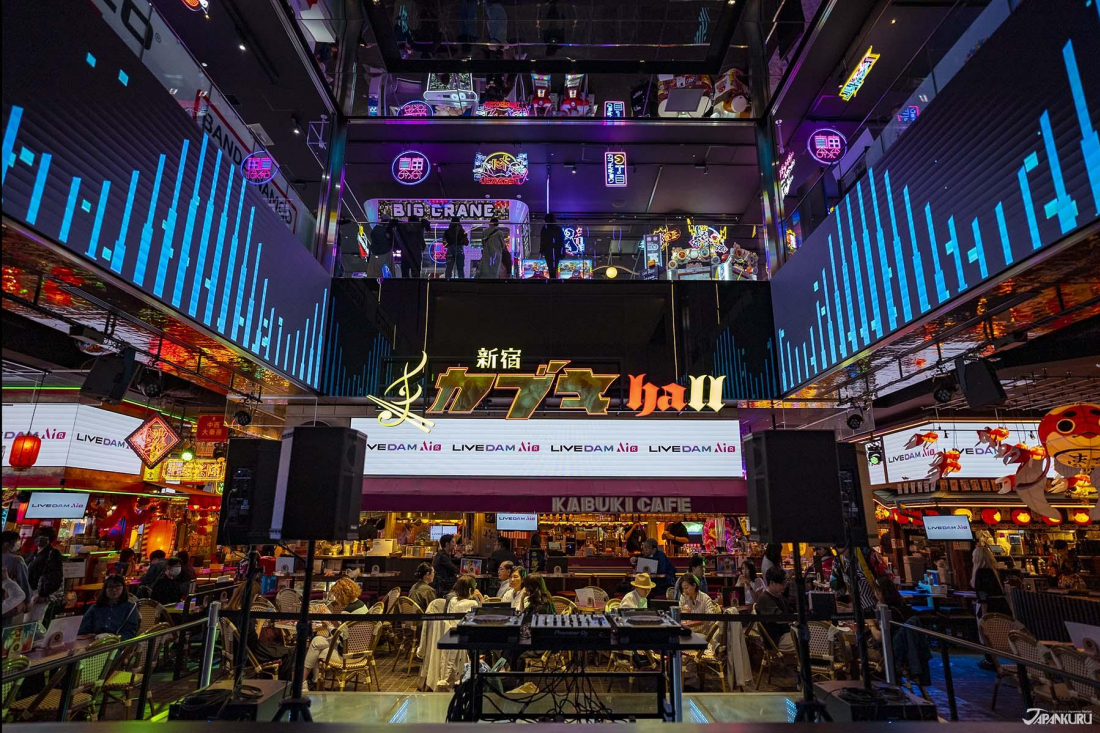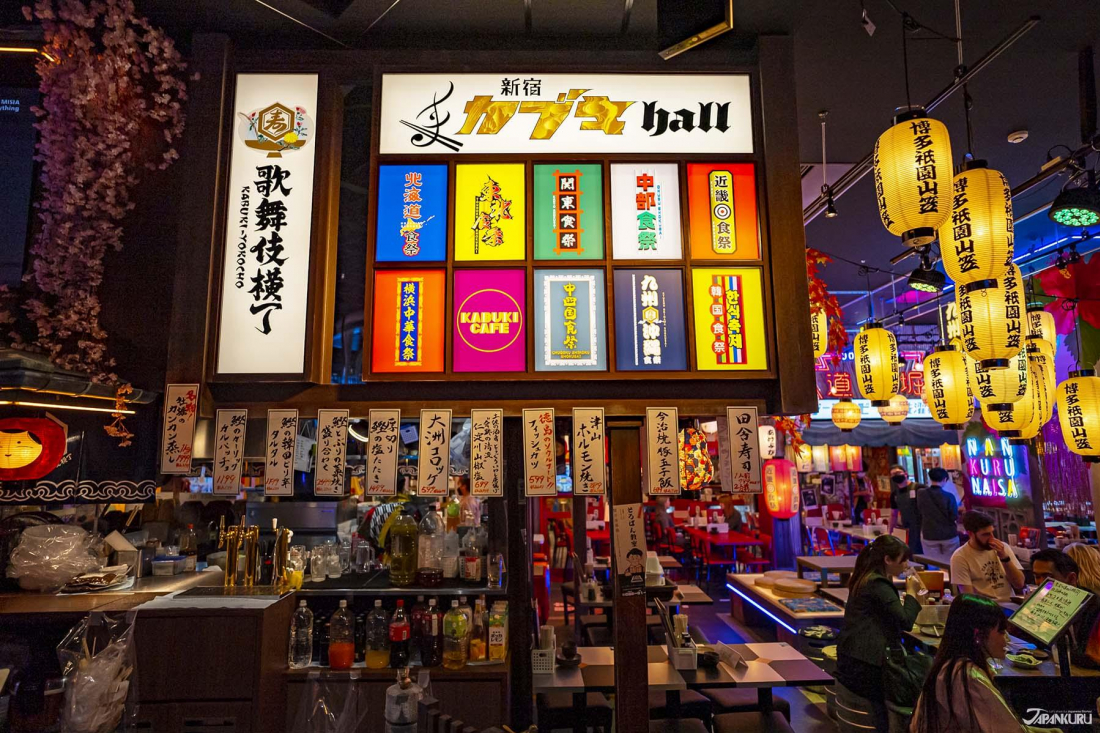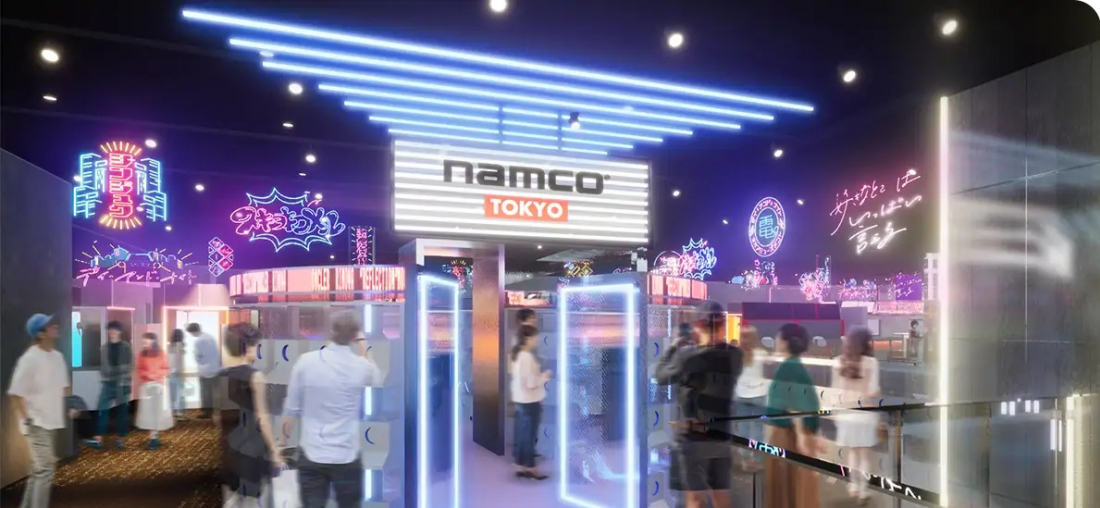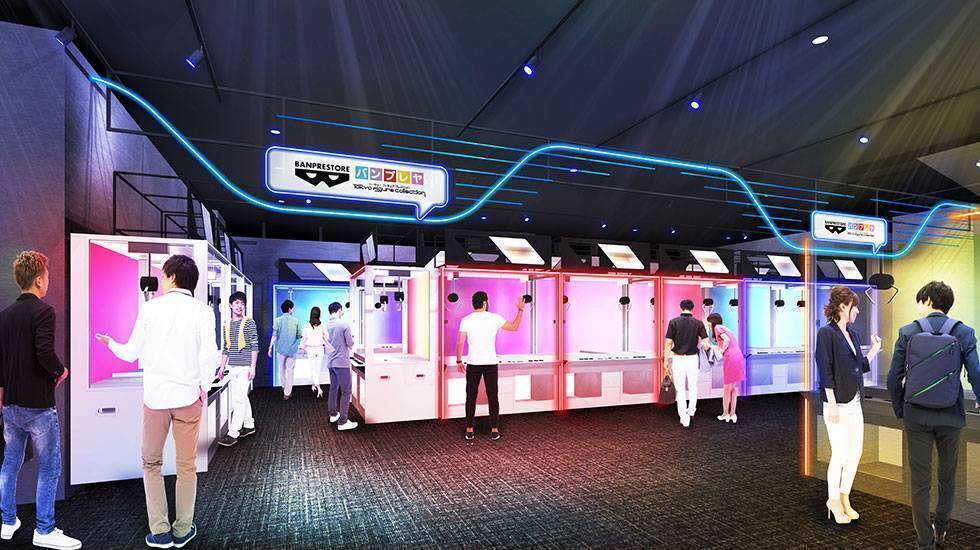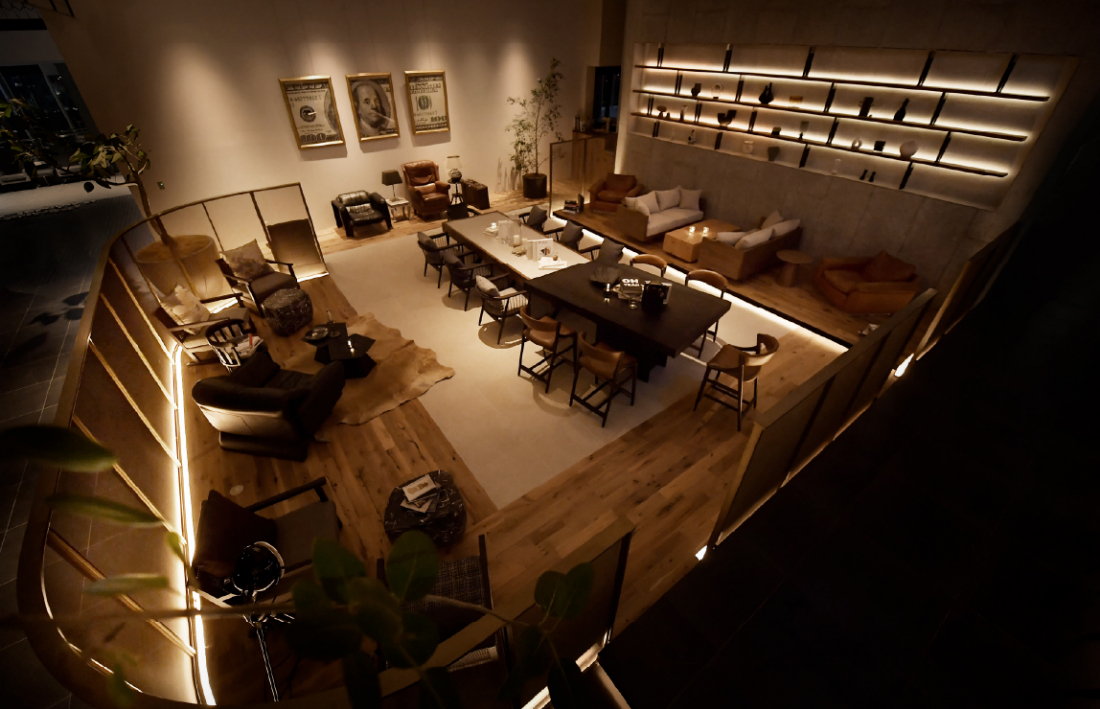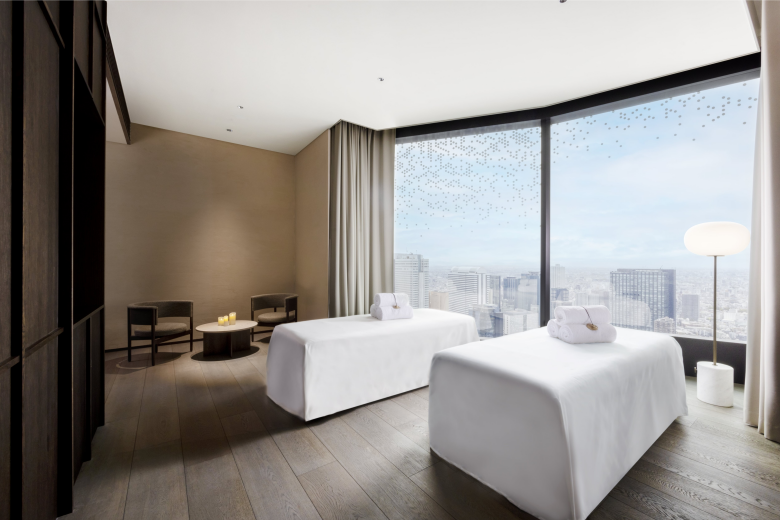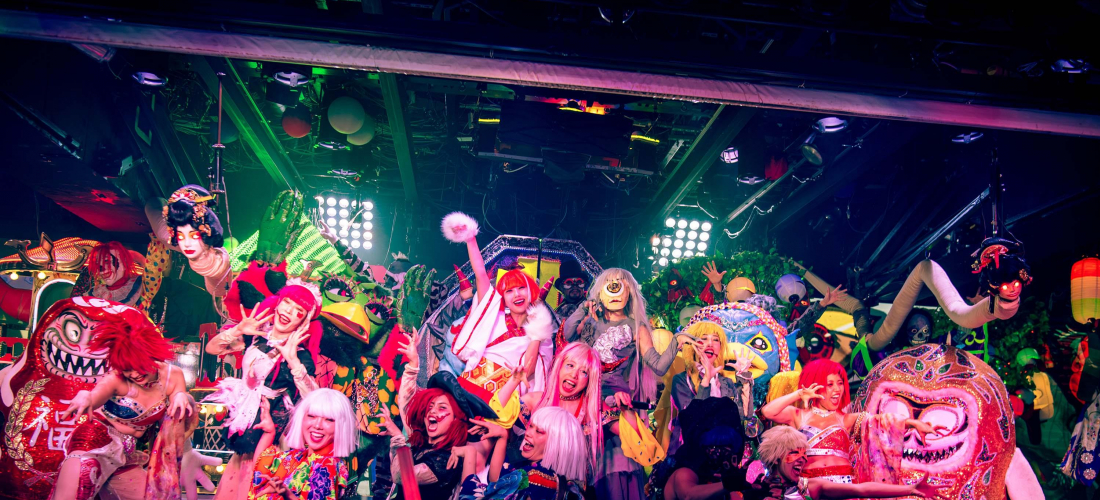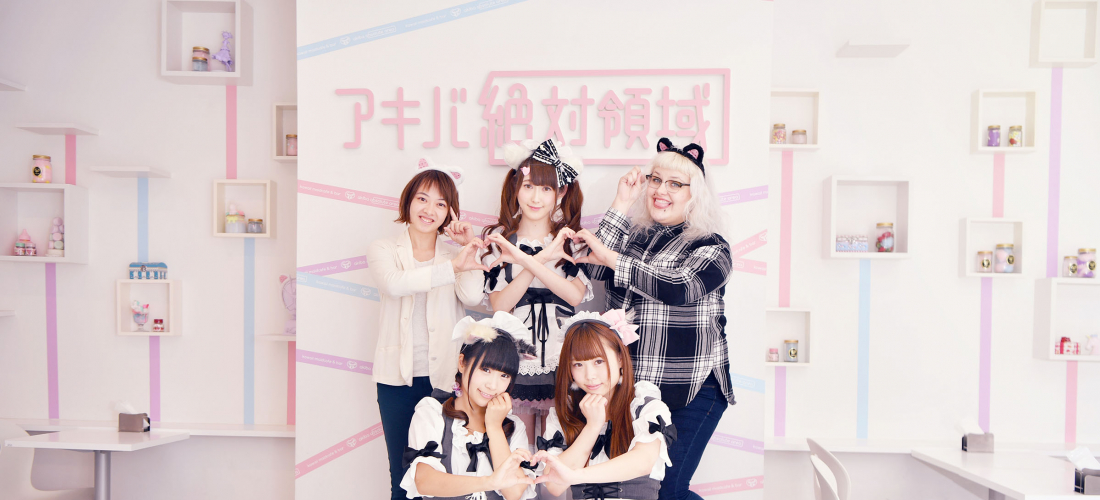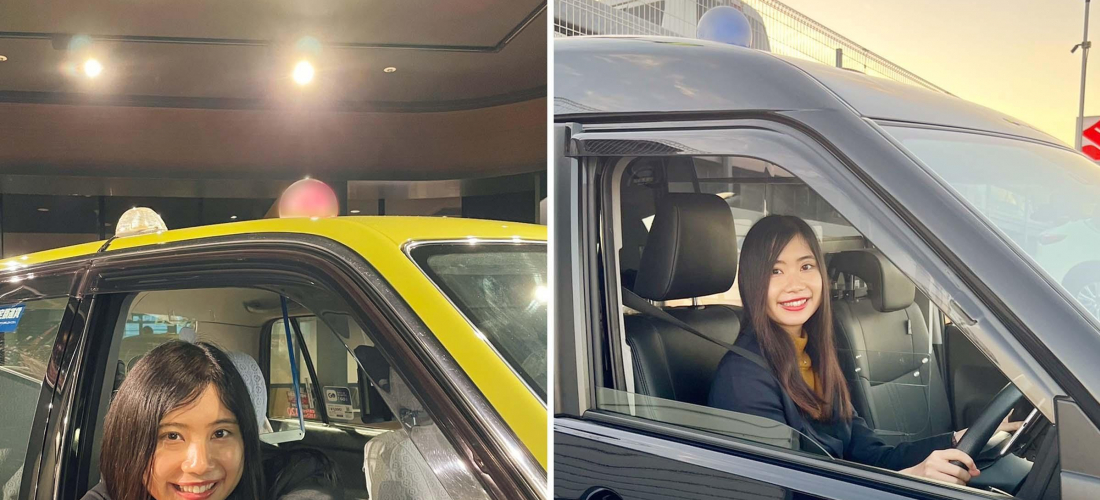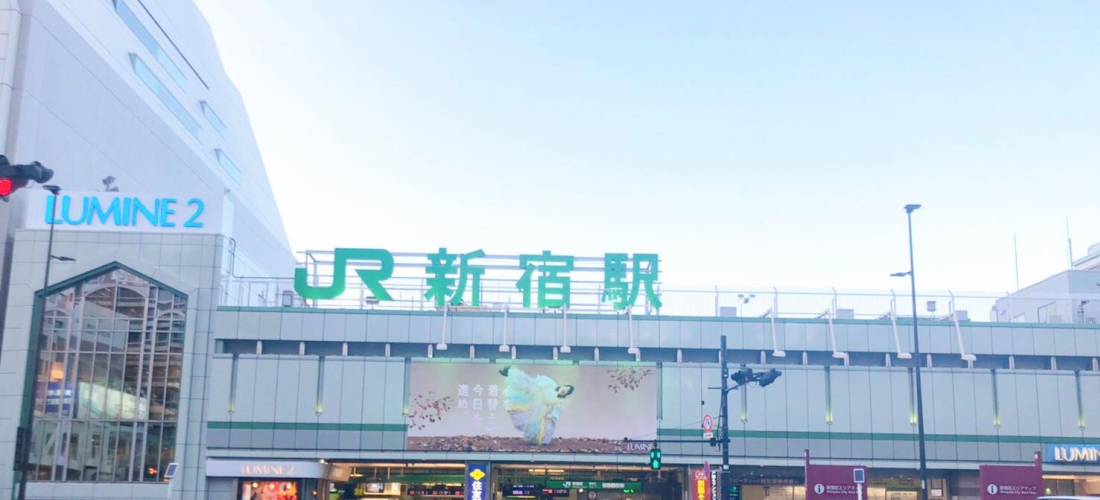CONTENTS
Kabukicho Tower is a brand new addition to one of Tokyo’s busiest neighborhoods, with food and fun for crowds young and old.
This spring, a new landmark took its place in the Shinjuku skyline, literally towering over the competition with its unique frosted fingers. And since its opening on April 14th, a local landmark is exactly what the Tokyu Kabukicho Tower is aiming to become. Built like a hot spring shooting high into the air from the busy ground of Kabukicho – Shinjuku's somewhat seedy nightlife hotspot – this new facility is just about 50 floors of food, entertainment, and accommodations, bursting with all the neo-Tokyo style that travelers in the city could dream of. The building certainly gets full marks for presentation, but what about everything inside?
Kabukicho, Shinjuku
While Shinjuku is a must on just about any traveler's Tokyo itinerary, the Kabukicho area north of the station doesn't always make the cut. In the evening, this little neighborhood teeters right on the edge of decency, packed full of nightlife that ranges from welcoming izakaya restaurants and the famously flashy performances of the Shinjuku Robot Restaurant, to businesses with staff in various states of undress. After dark, some travelers find the area a little sketchy, with the streets full of revelers and businessmen passed out on the curb after a few too many "chuhai" cocktails. But it's also at the heart of Shinjuku – the area contains Shinjuku city hall and some big hotels – so when the sun rises, tourists return and transform Kabukicho into just another chunk of Tokyo. With the addition of the Tokyu Kabukicho Tower, the area will be sure to attract even more sightseers during the daylight hours.
Tokyu Kabukicho Tower
Standing tall over the busy streets of Kabukicho, the Tokyu Kabukicho Tower shoots over 200m (650ft) into the air. The building usually goes by the shortened name "Kabukicho Tower," in part because of the somewhat confusing name "Tokyu," which is in fact a reference to the Tokyu Corporation that manages the building (as well as Tokyu Railways), and not a misspelling of Tokyo. Starting from a performance venue underground, the building has over 50 floors of entertainment facilities, restaurants, and accommodations – so let's take a look from the bottom up.
B1F – B4F: Zerotokyo・Zepp Shinjuku
The basement of Kabukicho Tower is perhaps the most fitting addition to the neighborhood of the whole tower, with a nightclub (Zerotokyo) and a new facility from the Zepp network of live music venues. Zepp locations around Tokyo are perennial favorites for independant musicians of all kinds performing in the city, and the convenient location of Zepp Shinjuku will undoubtedly attract a packed schedule from a variey of genres.
2F: Shinjuku Kabuki Hall ~ Kabuki Yokocho
Kabukicho Tower's main entrance is actually an escalator directly to the second floor, which means that most visitors skip right over the odd arrangement of the first floor (unless they're heading right to the first-floor Starbucks)! The escalator delivers visitors directly into a scene straight from a sci-fi flick, with a festival-themed food court area that looks like Tokyo from a future where the whole city turned into a theme park. The actual food options are all about bringing regional Japanese specialties to Shinjuku, with "soul food" from Hokkaido, Tohoku, Kanto, Chubu, Kansai, Shikoku, Kyushu, and Okinawa, as well as Chinese food inspired by Yokohama Chinatown and a Korean restaurant no doubt inspired by recent pop culture trends.
3F: Namco Tokyo
The neon signs continue on the 3rd floor, where a gaming arcade is set up to include plenty of fan favorites (see: Mario Kart) and some unique additions (if nothing else, you might want to take a look at the giant crane game at the center of the arcade). The floor also offers spots to purchase some pop culture merchandise from series like One Piece and Pokemon, along with a whole area dedicated to gashapon machines – some of which only accept digital payment!
4F: The Tokyo Matrix
This "experimental attraction" on the 4th floor is a little like an escape room, but that description doesn't quite seem to cover the entirety of the Tokyo Matrix experience. Put together by Sony Music but clearly inspired by the company's gaming empire, this "dungeon" requires visitors to punch, throw, pull, search, and otherwise problem-solve their way through the dim hallways and make it out the other side.
5F: Exstion
Arrive on the 5th floor of Kabukicho Tower, and all of a sudden things get rather ~exclusive~ thanks to the members-only system at Exstion. This rather luxurious lounge, with a private gym, sauna, pool, and relaxation space, is probably a bit of a stretch for most tourists (or really anyone without serious amounts of excess cash to throw around), but we can dream, can't we? Memberships start from 198,000 yen a month or 330,000 yen a year.
6F – 8F: Theater Milano-Za
Before Kabukicho Tower, this patch of land held the Shinjuku Milano-Za movie theater, a Kabukicho icon that attracted generations of movie buffs. Built on the shoulders of such a historic structure, the new performance stages taking up the 6th to 8th floors of the tower were built in its honor, ready to keep maintain Kabukicho's entertainment reputation with plays, musicals, and other performances.
17F – 38F: Hotel Groove Shinjuku & Jam 17
The first of two hotels in Kabukicho Tower, Hotel Groove takes up floors 18 to 38, with 20 levels and 538 rooms styled along a funky retro music theme. On the 17th floor, the hotel manages a restaurant and bar floor, which probably won't become "Kabukicho's new hub for social gatherings," but the bar does have some cool sculptural installation art to admire. Even if you have no plans to stay overnight or grab a bite to eat, the hotel's lobby does offer a great view of Kabukicho from above (including the giant Godzilla next door).
39F – 47F: Hotel Bellustar Tokyo
At the very top of the tower, Hotel Bellustar has six floors of chic modern rooms and then another three floors of restaurants and spa facilities on top of that, all high above Shinjuku. The wide windows with spectacular views and the luxurious facilities promise a lovely stay and an impressive price tag to go with it.
A New Look for Kabukicho
A far cry from the dark, cramped, and seedy image that many Tokyo locals have of Kabukicho – the new Tokyu Kabukicho Tower shoots high into the sky of Shinjuku, lit bright with neon signs, and lively with trend-seeking customers. While the surroundings are still the same old Kabukicho, and the many alleys lined with drinking establishments aren't getting gentrified into oblivion anytime soon, this new building has already brought a breath of fresh air to the area with the whirlwind of new visitors. Stop by soon to see how the city is changing!
For more info and updates from Japan, check Japankuru for new articles, and don't forget to follow us on Twitter, Instagram, and Facebook!
Details
NAME:Tokyu Kabukicho Tower (東急歌舞伎町タワー)
ACCESS:Shinjuku Station / Shinjuku-nishiguchi Station
PROFILE
COMMENT
FEATURED MEDIA
VIEW MORE
・Accommodations for Odaiba Sightseers: Mitsui Garden Hotel Toyosu PREMIER ・住宿推薦 三井花園飯店 豐洲普米爾 ・오다이바 관광 맞춤 숙소: 미츠이 가든 호텔 토요스 프리미어 ・ค้างคืนที่ Mitsui Garden Hotel Toyosu Premier โรงแรมสำหรับผู้มาเยือน Odaiba #japankuru #odaiba #tokyo #tokyotrip #japantrip #japantravel #mitsuigardenhotel #mitsuigardenhoteltoyosupremier #tokyohotel #odaibahotel #toyosu #tokyoview #tokyobay #rainbowbridge #미츠이가든호텔토요스프리미어 #오다이바 #오다이바맛집 #오다이바건담 #오다이바해변공원 #오다이바야경 #오다이바온천

Nagano Prefecture is famous for delicious soba noodles, and in the city of Ueda, you can learn from the experts! Local aunties run this cooking class, teaching you everything you need to know to make your own delicious plate of soba noodles entirely from scratch. #japankuru #soba #sobanoodles #japanesefood #travelexperience #japan #japantrip #ueda #nagano #japaneseculture #japanexperience #daytrip #daytour #cookingclass #japanesecookingclass #上田市 #そば作り #소바체험 #우에다시 #나가노여행 #일본소바

Kuramae Shrine is known for its early-blooming cherry blossoms and its gorgeous golden mimosa blooms, making it a great sakura spot for travelers arriving in Tokyo a little early for the main cherry blossom season. It’s also tucked away in a neighborhood packed with trendy cafes and coffee shops. Kuramae is a lovely place to spend the day. 🌸☕️ ・ #japankuru #kuramaeshrine #kuramae #tokyo #tokyotrip #cherryblossom #cherryblossoms #mimosa #tokyocherry #花見 #蔵前神社 #ミモザ #桜 #東京 #Japan #日本 #일본 #Japon #ญี่ปุ่น #Japão #Japón #япония #japantravel #日本旅行 #日本旅遊 #일본여행 #japan_of_insta #japantrip #traveljapan

Local Japanese Favorites at the Okinawa Don Quijote ② Ohta’s Isan, the digestive aid of the Japanese people ・ ・ 2024唐吉訶德不可不知的好物推薦② 日本國民消化小幫手:太田胃散 ・ ・ 오키나와 돈키호테 숨은 꿀템2. 일본 국민 소화제! 오타이산 #japankuru #okinawa #donki #沖縄 #오키나와 #오키나와여행 #오키나와돈키호테 #일본쇼핑리스트 #오타이산 #일본소화제 #太田胃酸 #ohtasisan

Happy Valentine's Day from the Japankuru team! May your day be full of sweet chocolates and sweet nothings. 💕 Or, if you're like a rising number of women in Japan, take the opportunity to treat yourself! 🍫💝💆 • Find out more at Japankuru.com! (Link in bio.) • #japankuru #valentinesday #valentineschocolate #japanesechocolate #japaneseculture #バレンタイン #バレンタインチョコ #メリーチョコレート #Japan #日本 #일본 #Japon #ญี่ปุ่น #Japão #япония #japantravel #日本旅行 #日本旅遊 #일본여행 #japan_of_insta #japantrip #traveljapan #japan🇯🇵 #japanlife #igerstokyo #explorejapan #japanfocus #enjoyjapan #japantravelphoto

Japankuru Coupon: BEAMS fashion, accessories, lifestyle goods, and more! BEAMS 5% Discount Coupon ▶︎ Validity Dates: February 1 ~ February 29, 2024 ▶︎ Discount: 5% off all products in-store ▶︎ Usable At: BEAMS stores throughout Japan (all stores except BEAMS JAPAN Izumo and BEAMS JAPAN Nikko) ▶︎ Details: Please present this coupon page before payment to receive your discount! This coupon is also valid in combination with tax-free discounts/refunds for foreign tourists. (Tax-free shopping is only available at some BEAMS locations.) Some products may not be eligible for discount. ・ ・ ・ BEAMS - JAPANKURU優惠折扣券 BEAMS 2024年2月限定特別優惠券 店內全部商品95折 ▶︎使用期間:2024/2/1到2024/2/29 ▶︎使用範圍:日本全國店舖 ▶︎使用方法:結帳時請務必事先向店員出示本優惠券,若未出示本優惠券恕無法享有本優惠。本優惠券可搭配免稅優惠一併使用,但不排除特定門市無法使用本優惠券。此外,不排除特定商品不適用本優惠券。 ・ ・ ・ 「빔즈(BEAMS) x 재팬쿠루(JAPANKURU)」스페셜 할인 쿠폰 빔즈(BEAMS) 5% 할인 쿠폰 ▶유효기간: 2024년 2월 1일 ~ 2월 29일(한 달 동안) ▶︎할인율: 매장 내 전 상품 “5% 할인" ▶︎해당 매장: 일본 전국 빔즈 (BEAMS) 매장 (BEAMS JAPAN이즈모、BEAMS JAPAN닛코는 쿠폰 할인 대상 제외 점포입니다) ▶︎상세 내용: 결제 전 본 쿠폰 페이지를 제시하면 정가대비 5% 할인된 금액에 구매하실 수 있습니다! 본 쿠폰은 외국인 관광객들을 대상으로 하고 있으므로 면세 혜택(빔즈 일부 매장)과 별도로 추가 할인이 가능합니다. (일부 매장 및 제품은 대상에서 제외될 수 있습니다.) #japankuru #beams #beamsjapan #beamsginza #coupon #재팬쿠루 #빔즈재팬 #빔즈 #일본여행 #일본쇼핑 #일본쇼핑리스트 #銀座 #東京 #tokyoshopping #japankurucoupon

